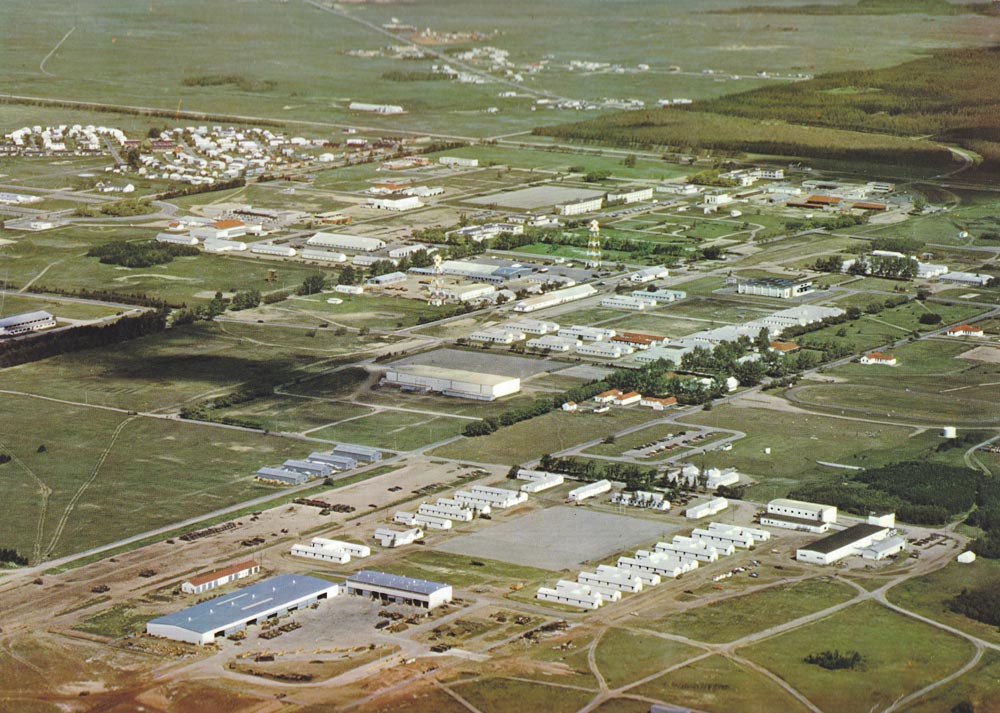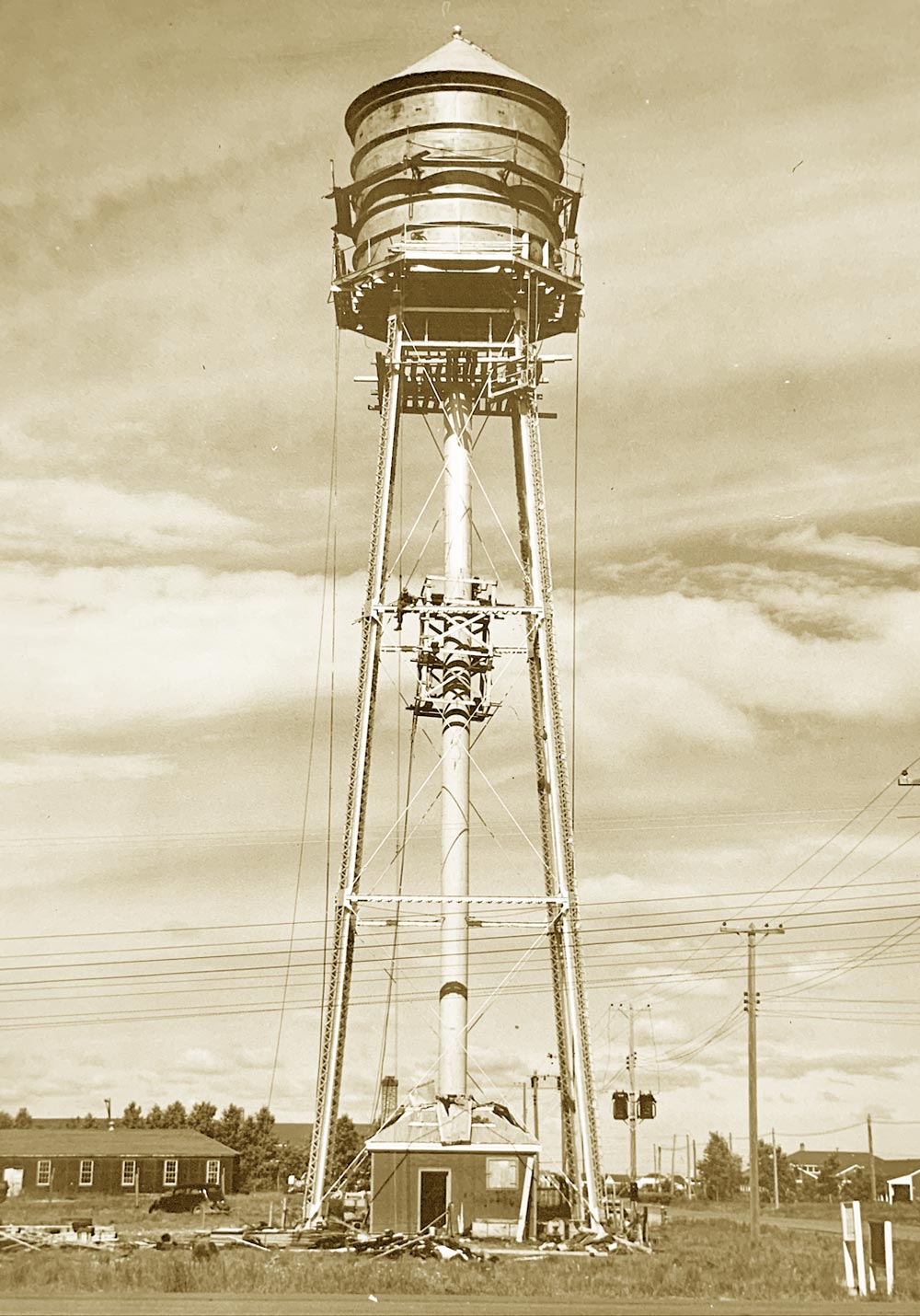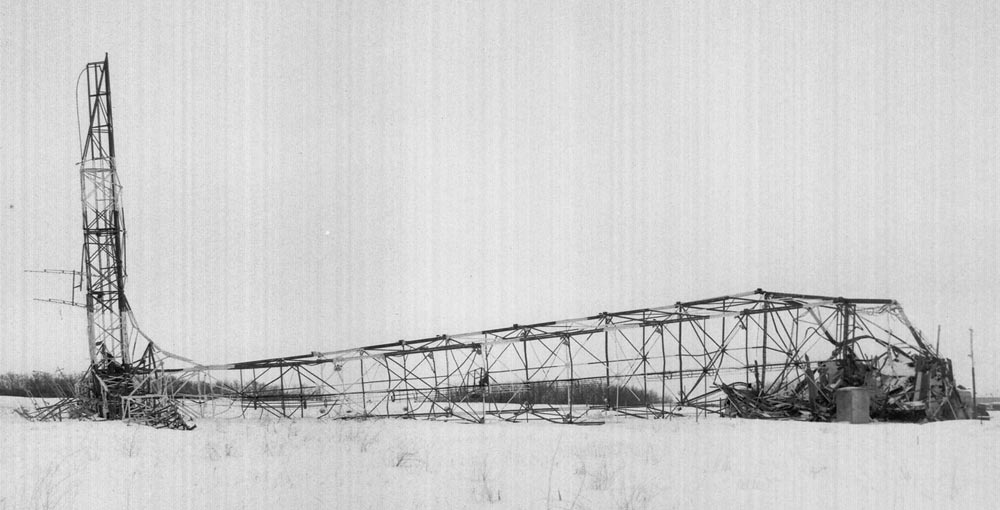

Today, the Base’s landscape has changed over the decades as some buildings built in the late 40s, and early 50s, are no longer here. This includes the Base’s jump tower, and the two water towers. Photos Stag Archives
Shilo Stag
Many Gunners who returned to the Home Station this fall were immediately struck by a strange sensation.
Something was not as it should be. While there have been obvious changes over the years, these were to be expected and occurred gradually.
Still, something was just not right!
The sandy soil beneath the now parched bentgrass seems unchanged, the prevailing westerlies blow as consistently as ever, the rattle of the aspen leaves still compete with birdsong and the echo of gunfire, but something is wrong.
After a short period of reflection on how things were in days gone by, the reason for unease becomes apparent: the view to the horizon is unimpeded!
Both water towers have been razed and carried away. The old adage you could see tomorrow coming on the eastern horizon is now joined by a still lingering view of yesterday to the west.
The north and south water towers have been an integral part of the Shilo scene for more than 50 years — the south tower was built in 1934; the north tower went up in 1943.
In addition to their purely functional raison d’etre, they also provided suitable surfaces for the graffiti of numerous daring authors, directional beacons for a large portion of the training area, a quick reference point for several thousand Gun Numbers, Artillery technicians and surveyors, as well as a vantage point for the local raven population.
A companion tower, the Para Tower, met is demise in the spring of 1987. Unlike the Para Tower which steadfastly resisted the initial efforts to topple it, both water towers departed without fuss or fanfare between Sept. 11 and 19 in 1991.
Perhaps they tired of standing unused these past several years or perhaps they merely accepted the ignominy of obsolescence.
One consequence of their disappearance from the Shilo skyline is the inability of travellers on the Trans-Canada Highway to accurately locate CFB Shilo.
The unmistakable towers no longer thrust their silhouettes above the horizon and no longer provide a characteristic light array during the long night hours.
Now that they are gone, one cannot help but wonder how subsequent generations of Gunners will fare without them?
Even the crustiest and most obstinate Gunnery instructor had to admit that as a CAG or RO these objects had few equals.
After all, they were normally more than 1,500 metres away, were unmistakable — once you learned to differentiate between the north and south towers — and had a distinct laying edge or laying point.
Additionally, until mid-September 1991, they were not likely to move, a definite improvement on the vertical exhaust pipe of a 2 1/2 tonne truck, a point of lay selected by more than one hapless Gunner in training.
The self-appointed “cream” of the Gunner world, the technicians and surveyors, also made good use of these towers.
Several thousand Bearing and Distance from co-ordinates problems were computed between them and many an exercise opened or closed on them.
The single drawback, however, was the inability of an observer to set his instrument over the exact center of the towers.
The remedy, well remembered by many young surveyors, was the infamous and dreaded “Reduction to Center” — a procedure designed by the devil himself.
It really does not seem too bad now, but back then … the water towers also provided excellent ROs if you were fortunate enough to be on a gun position which afforded a line of sight to them.
The advantages of not having to climb trees to affix kerosene lanterns or flashlights was significant.
As well, if flashlights were used, the problems were compounded as the batteries provided by the BQMS had been hoarded for the past several years and bore a shelf-life date which coincided with the Change of Command (CoC) parade of two Commanding Officers (COs) removed.
This of course necessitated numerous nighttime battery changes.
Non-Gunners too made full use of these landmarks to gain orientation. Now that they are gone, I predict the bones of an infantry section will one day be found mouldering amidst the sands of Shilo.
Having lost their usually reference points, they simply wandered the training area until whichever patron saint watches over infantrymen called them home.
An era has closed on the Home Station. The familiar landmarks have been lost and few comment on the towers’ passing.
For the three generations of Gunners who remember and used them, however, they will always remain a well remembered characteristic of our Home Station.





